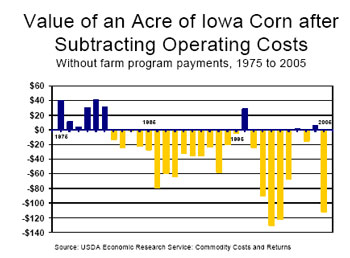According to a report from Truth About Trade & Technology, soon-to-be Agriculture Committee chairmen Sen. Tom Harkin and Rep. Collin Peterson are in disagreement over the lifting of tariffs on imported ethanol.

 After earlier reports indicated Harkin, an Iowa Democrat, would support a lifting of tariffs on ethanol imported to the U.S. from abroad, the Minnesota Democrat Peterson took a hard line against such a move Friday.
After earlier reports indicated Harkin, an Iowa Democrat, would support a lifting of tariffs on ethanol imported to the U.S. from abroad, the Minnesota Democrat Peterson took a hard line against such a move Friday.
“Are you serious?” Peterson said Friday after learning of Harkin’s stance on the tariff. “I’m not in favor of that. I think we’ve got plenty of ethanol production in this country coming online to meet the demand of this industry, and I for one am not interested in making any changes in the foreseeable future in that.”
In addition to diluting a now vibrant corn-based ethanol marketplace in the U.S., Peterson said allowing tariff-free ethanol imports would hamper efforts underway to develop cellulosic ethanol production, support for which Peterson says he hopes to include in the 2007 farm bill.


 Tight world grain supplies and expanding corn based domestic ethanol production have created improved marketing options for U.S. feed grain producers. However, the U.S. feed grains industry should not abandon international market development programs and efforts to preserve its hard won world market share of feed grain and co-product exports based on the current trends, according to Ken Hobbie, president and CEO of the
Tight world grain supplies and expanding corn based domestic ethanol production have created improved marketing options for U.S. feed grain producers. However, the U.S. feed grains industry should not abandon international market development programs and efforts to preserve its hard won world market share of feed grain and co-product exports based on the current trends, according to Ken Hobbie, president and CEO of the  If only a quarter of proposed new Midwest ethanol plants come on-line, up to half of corn in Midwest states currently sent for export could be diverted to domestic ethanol production, according to a new report by the
If only a quarter of proposed new Midwest ethanol plants come on-line, up to half of corn in Midwest states currently sent for export could be diverted to domestic ethanol production, according to a new report by the  It’s time to register for the 2007
It’s time to register for the 2007  Average corn prices are now expected to range between $2.90 to $3.30 a bushel, up ten cents from last month’s forecast. USDA Chief Economist Keith Collins said, “We think about 50 percent of the corn crop has been marketed so far this year at an average price of about $2.70 a bushel. As we look for the other 50% to be marketed, we think that could probably average about $3.50 a bushel.”
Average corn prices are now expected to range between $2.90 to $3.30 a bushel, up ten cents from last month’s forecast. USDA Chief Economist Keith Collins said, “We think about 50 percent of the corn crop has been marketed so far this year at an average price of about $2.70 a bushel. As we look for the other 50% to be marketed, we think that could probably average about $3.50 a bushel.”


